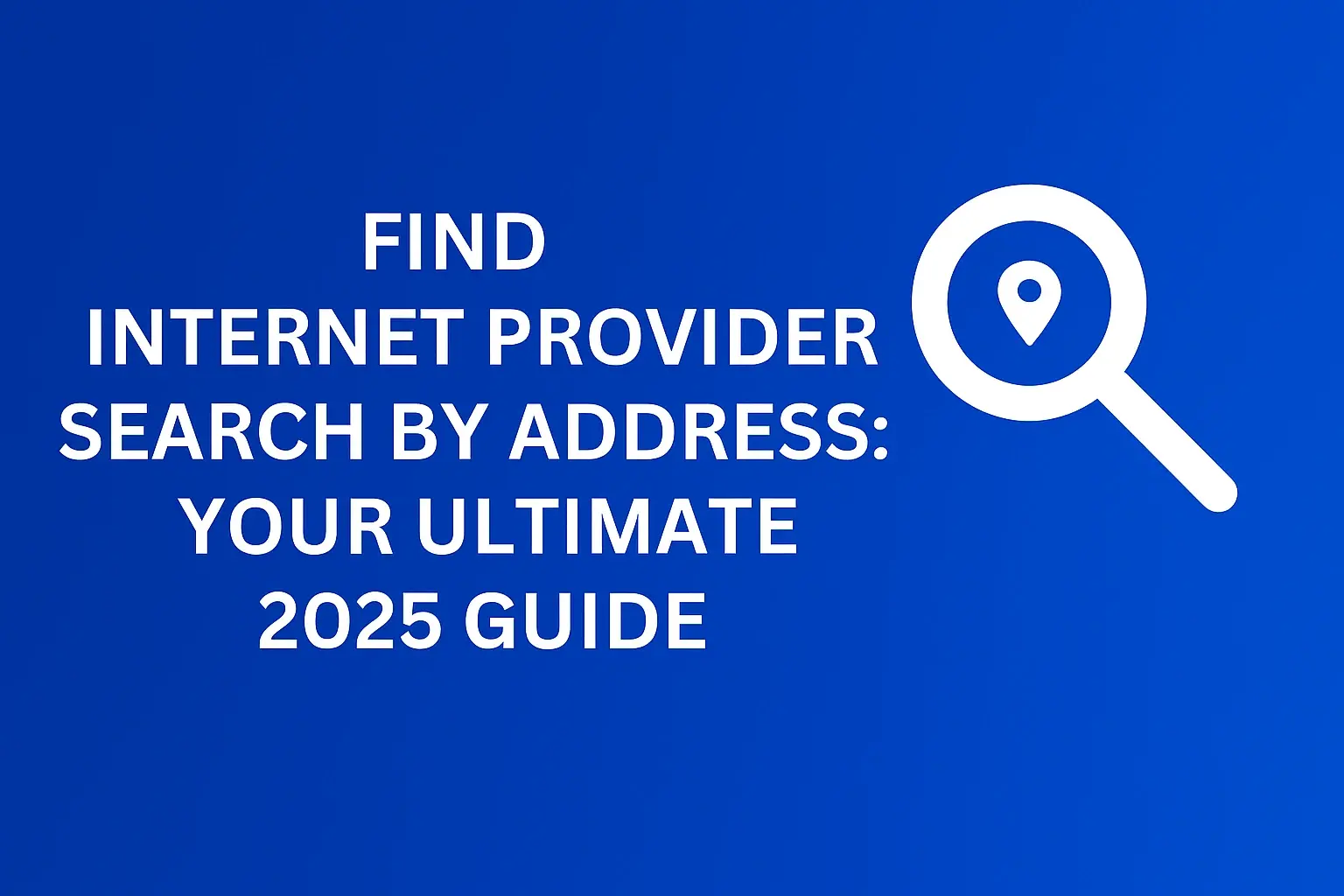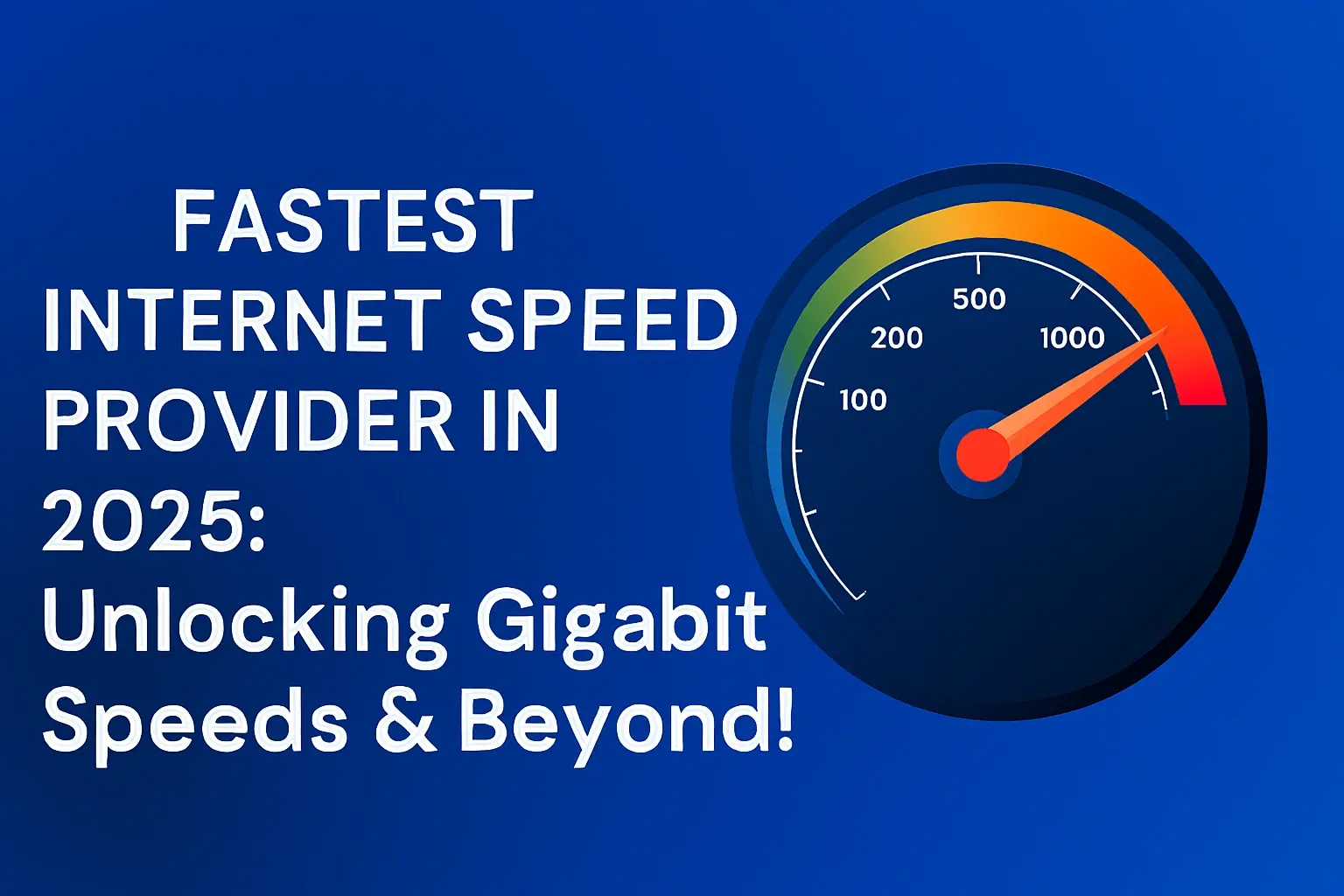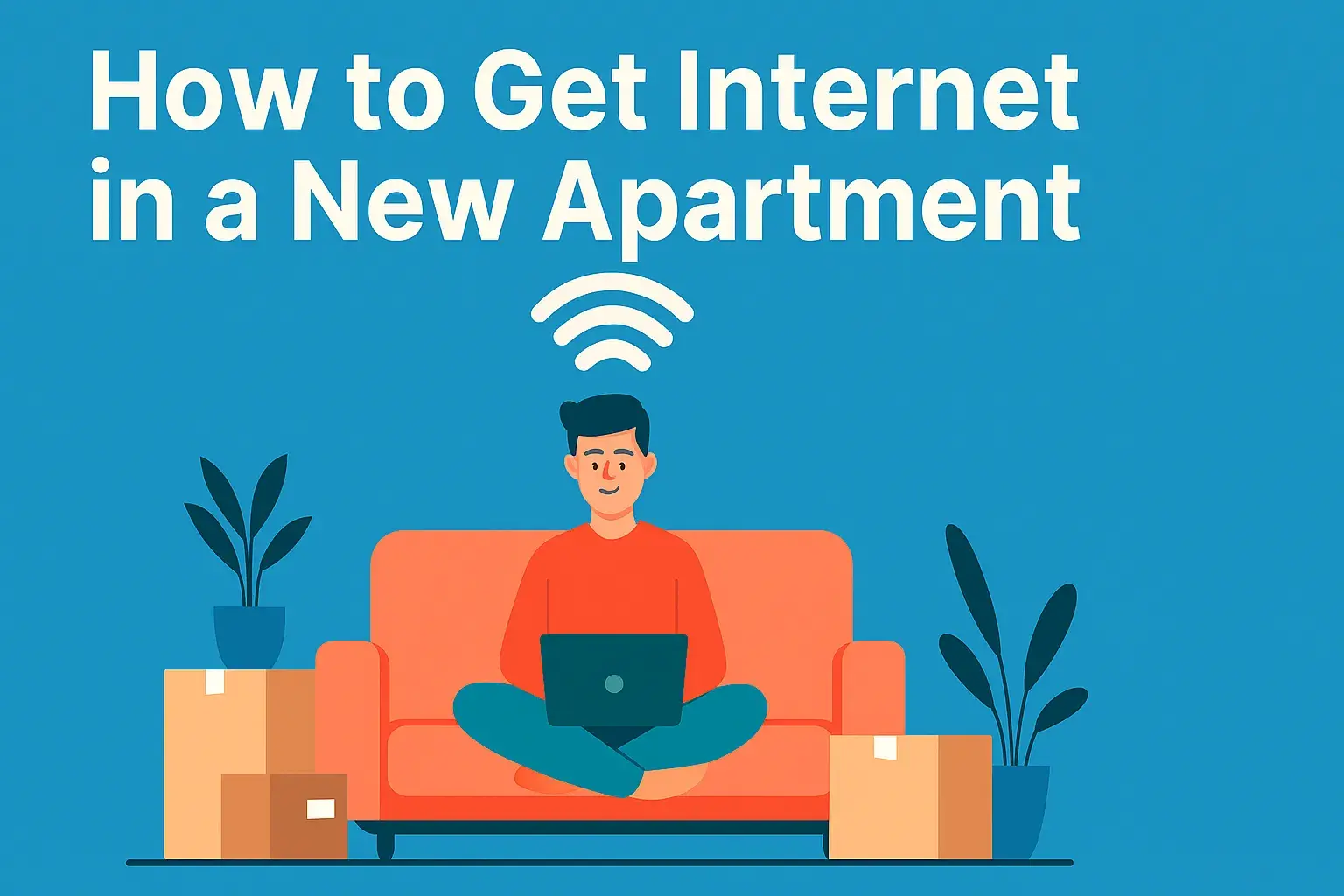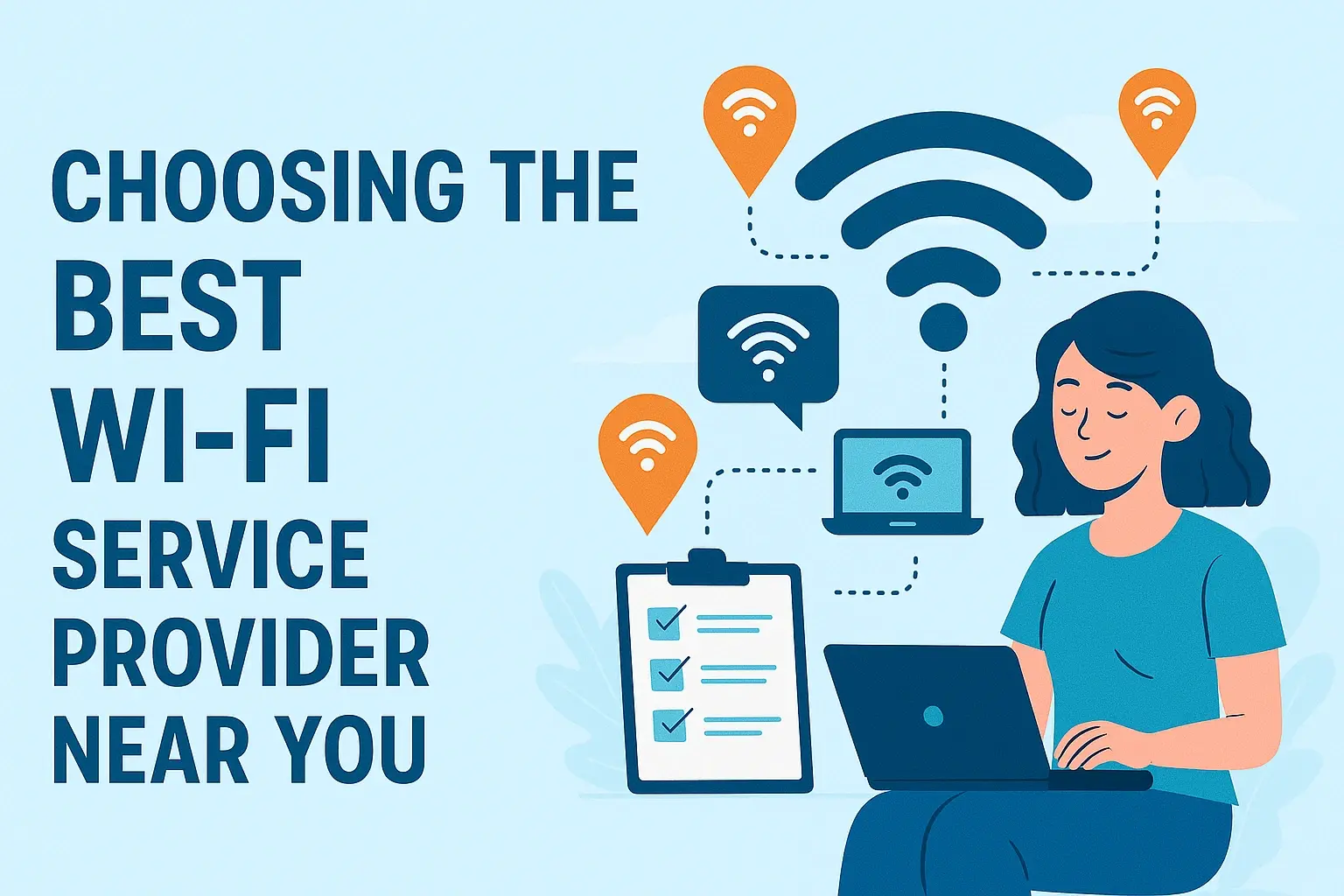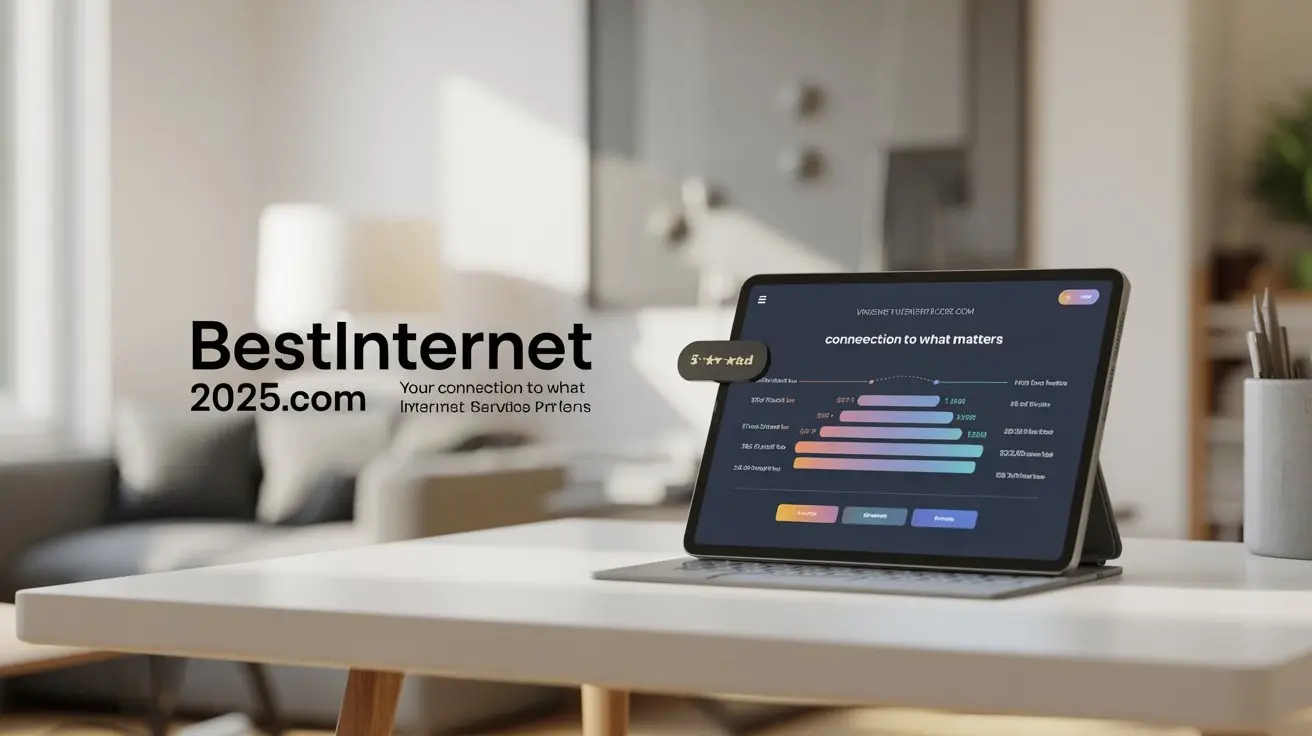Beginners Guide To TV Streaming

Unlock the future of entertainment with this comprehensive beginners guide to TV streaming. Discover how to ditch cable, save money, and access a universe of content tailored to your tastes. We'll demystify the technology and help you build the perfect streaming setup.
What is TV Streaming?
At its core, TV streaming is the delivery of television content over the internet, rather than through traditional cable or satellite broadcasts. Instead of receiving a signal via a physical cable or dish, you access shows, movies, live sports, and more through an internet connection. This content is delivered in a continuous flow, or "stream," directly to your chosen device. Think of it like Netflix, Hulu, or YouTube – you press play, and the video starts without needing to download the entire file first. This revolutionary shift has fundamentally changed how we consume visual media, offering unprecedented flexibility, choice, and often, cost savings compared to older methods.
In 2025, streaming is no longer a niche alternative; it's the dominant force in home entertainment. It encompasses a vast array of services, from on-demand libraries of movies and TV shows to live TV channels that mimic the traditional broadcast experience. The technology relies on robust internet infrastructure and a variety of user-friendly devices that make accessing this content as simple as flipping a channel. This guide is designed to equip you with all the knowledge needed to navigate this exciting landscape.
Why Switch to Streaming? The Benefits
The migration from traditional cable and satellite to streaming services isn't just a trend; it's a practical evolution driven by compelling advantages. For beginners, understanding these benefits is the first step to appreciating the value streaming offers. By the end of 2024, it's estimated that over 80% of US households will subscribe to at least one streaming service, highlighting its widespread adoption and the clear benefits it provides.
Unparalleled Content Choice and Customization
Traditional cable packages often force you to pay for dozens of channels you'll never watch. Streaming services, however, allow for highly personalized viewing. You can subscribe only to the services that offer the content you love, whether it's a specific genre, network, or even individual shows. This means no more paying for sports packages if you only watch documentaries, or vice-versa. Services like Netflix, Amazon Prime Video, Disney+, and HBO Max offer vast libraries of on-demand content, while live TV streaming services like YouTube TV, Hulu + Live TV, and Sling TV provide access to live channels without the long-term contracts and expensive equipment associated with cable.
Significant Cost Savings
This is often the most attractive benefit for new streamers. When you tally up the monthly fees for cable or satellite, plus equipment rentals and hidden charges, the cost can be substantial. Streaming services, when chosen strategically, can significantly reduce your monthly entertainment bill. While subscribing to multiple services can add up, it's still often less expensive than a comparable cable package. For instance, a basic cable package might cost $100-$150 per month, whereas a curated selection of 3-4 popular streaming services might range from $50-$80 per month. Furthermore, many streaming services offer annual plans at a discount, further enhancing savings.
Flexibility and Convenience
Streaming offers unparalleled flexibility. Watch what you want, when you want, on virtually any device. This means no more being tied to your living room TV. You can catch up on your favorite shows on your tablet during your commute, watch a movie on your laptop while traveling, or even stream live sports on your phone at a friend's house. The on-demand nature of most streaming content means you can pause, rewind, and fast-forward at your leisure, fitting entertainment into your schedule rather than the other way around. This freedom is a game-changer for busy individuals and families.
Ad-Free or Reduced Ad Experiences
While some streaming services offer ad-supported tiers to lower costs, many provide ad-free options. This means uninterrupted viewing of your favorite movies and shows, a luxury rarely afforded by traditional broadcast television. Even ad-supported tiers often have fewer and shorter commercials than traditional TV. This enhanced viewing experience significantly contributes to the overall satisfaction of streaming.
Access to Niche Content
Beyond the mainstream, streaming platforms have become havens for niche content. Whether you're interested in foreign films, independent documentaries, specific anime genres, or educational content, there's likely a streaming service catering to your interests. Services like MUBI focus on curated international cinema, while Crunchyroll is the go-to for anime fans. This specialization allows viewers to dive deep into their passions without being limited by the broad offerings of traditional providers.
Essential Streaming Devices for Beginners
To start streaming, you'll need a device that can connect to the internet and display content from streaming services. Fortunately, there's a wide range of user-friendly options available, catering to different budgets and existing setups. Here’s a breakdown of the most common and recommended devices for beginners in 2025.
Smart TVs
Many modern televisions come with built-in "smart" capabilities. This means they have an operating system and Wi-Fi connectivity, allowing you to download and run streaming apps directly from the TV itself. Brands like Samsung (Tizen), LG (webOS), Sony (Google TV/Android TV), and Roku TV (which uses the Roku OS) offer a seamless experience. The advantage here is simplicity – no extra boxes or cables are needed, and the interface is often integrated with your TV's remote.
- Pros: Integrated experience, no extra hardware, often sleek design.
- Cons: App selection can sometimes be limited on older or budget models, TV's operating system may become outdated.
Streaming Sticks and Boxes
These are small, plug-and-play devices that connect to your TV's HDMI port and provide access to streaming apps. They are an excellent way to make a non-smart TV "smart" or to upgrade an older smart TV with a faster, more up-to-date interface. Popular options include:
- Roku Devices (e.g., Roku Streaming Stick 4K, Roku Express): Known for their simple interface and vast app selection. Roku OS is very intuitive for beginners.
- Amazon Fire TV Devices (e.g., Fire TV Stick 4K Max, Fire TV Cube): Integrated with Amazon's ecosystem, offering voice control via Alexa and access to a wide range of apps.
- Google Chromecast with Google TV: Combines the casting functionality of older Chromecasts with a full-fledged smart TV interface, powered by Google TV (Android TV).
- Apple TV 4K: A premium option offering a polished interface, excellent performance, and deep integration with Apple's ecosystem. It's a bit pricier but offers a top-tier experience.
Comparison of Popular Streaming Devices (2025):
| Device | Price Range (USD) | Key Features | Best For |
|---|---|---|---|
| Roku Streaming Stick 4K | $40 - $50 | Simple interface, wide app support, voice remote | Beginners, users prioritizing ease of use |
| Amazon Fire TV Stick 4K Max | $40 - $55 | Alexa integration, fast performance, Prime Video integration | Amazon Prime members, voice control enthusiasts |
| Google Chromecast with Google TV | $50 - $60 | Google TV interface, voice assistant, casting capabilities | Google ecosystem users, those wanting a unified interface |
| Apple TV 4K | $120 - $180 | Premium performance, polished UI, Apple ecosystem integration | Apple users, those seeking top-tier performance and features |
Gaming Consoles
If you already own a modern gaming console like the PlayStation 5 or Xbox Series X/S, you likely have access to many popular streaming apps. These consoles are powerful multimedia hubs that can stream content in high definition, often with support for 4K and HDR. While they are primarily gaming devices, their streaming capabilities are robust and can eliminate the need for a separate streaming device if you already have one.
- Pros: Powerful hardware, access to a wide range of apps, multi-functional device.
- Cons: Can be overkill if you only need streaming, higher power consumption than dedicated streaming devices.
Computers and Mobile Devices
You can also stream directly from your laptop, tablet, or smartphone. Many streaming services have dedicated apps or websites that allow you to watch content on these devices. While convenient for on-the-go viewing, connecting a computer to your TV via an HDMI cable is also a viable option for a larger screen experience. This is often the most accessible starting point as most people already own these devices.
Choosing Your Streaming Services: A Deep Dive
With hundreds of streaming services available in 2025, selecting the right ones can feel overwhelming. The key is to understand your viewing habits and budget. We'll break down the major categories and provide examples to help you make informed decisions.
Subscription Video on Demand (SVOD)
These are the most common streaming services, offering a library of content accessible anytime for a monthly fee. They are the backbone of most streaming setups.
- Netflix: The pioneer of streaming, known for its vast library of original series, movies, documentaries, and a wide selection of licensed content. Offers multiple tiers, including ad-supported and ad-free.
- Amazon Prime Video: Included with an Amazon Prime subscription, it offers a growing library of originals, licensed movies, and TV shows. You can also rent or buy additional content.
- Disney+: The go-to for Disney, Pixar, Marvel, Star Wars, and National Geographic content. Popular for families and fans of these franchises.
- HBO Max (now Max): Features content from Warner Bros., HBO, DC, Discovery+, and more. Known for critically acclaimed dramas and blockbusters.
- Hulu: Offers a mix of current TV shows from major networks (often the day after they air), a strong library of older series, and original content. Also has an ad-free option.
- Apple TV+: Focuses on high-quality original programming with a curated selection of acclaimed series and films.
- Peacock: NBCUniversal's streaming service, offering a mix of current NBC shows, movies, originals, and live sports like Premier League soccer. Has free and premium tiers.
- Paramount+: Home to content from CBS, Paramount Pictures, Showtime (with a higher tier), and live sports like NFL games.
Live TV Streaming Services (vMVPDs)
These services aim to replicate the traditional cable TV experience by offering live channels, including news, sports, and entertainment, over the internet. They are excellent alternatives for those who want to cut the cord but still want live programming.
- YouTube TV: Offers a comprehensive package of over 85 live channels, including major networks, sports channels, and entertainment. Known for its unlimited cloud DVR storage.
- Hulu + Live TV: Combines Hulu's on-demand library with over 75 live channels. A strong option for those who want both live and on-demand content from a single provider.
- Sling TV: A more customizable and often more affordable option. It offers two base packages (Orange and Blue) that can be combined or augmented with various add-on "Extras" for specific interests like sports, kids, or entertainment.
- DirecTV Stream: Offers a range of packages, some of which include regional sports networks that are hard to find elsewhere. It's generally more expensive but provides a more traditional cable-like experience.
Niche and Specialty Services
For specific interests, these services offer deep dives into particular genres or content types.
- Crunchyroll: The premier destination for anime fans, offering a massive library of subtitled and dubbed anime series.
- MUBI: Curated selection of independent, classic, and international films.
- Shudder: The go-to for horror, thriller, and supernatural content.
- BritBox: Features a wide selection of British television shows and films from BBC and ITV.
- ESPN+: Offers a vast amount of live sports content, original series, and documentaries, often including events not broadcast on ESPN's main channels.
Free Streaming Services (AVOD - Advertising-Supported Video on Demand)
These services offer content for free, supported by advertisements. They are a great way to access a variety of movies and shows without any subscription cost.
- Tubi: Offers a large library of movies and TV shows from major studios, updated regularly.
- Pluto TV: Features a channel-based interface that mimics traditional TV, with live streams and on-demand content.
- IMDb TV (now Amazon Freevee): Offers a selection of movies and TV shows, including some originals.
- The Roku Channel: Available on Roku devices and via web browser, offering free movies, TV shows, and live channels.
How to Build Your Streaming Bundle (Example for 2025):
Let's say you're a family that loves movies, binge-worthy series, and catching the occasional live sports game. A potential bundle could look like this:
- Netflix (Standard Plan): For popular originals and a broad movie/TV library. ($15.49/month)
- Disney+: For family-friendly content, Marvel, and Star Wars. ($7.99/month)
- YouTube TV: For live sports, news, and popular network shows. ($72.99/month)
Total Estimated Monthly Cost: $96.47. This is often significantly less than a comparable cable package, especially when you consider equipment rental fees and potential price hikes.
Alternatively, a single person who primarily watches movies and critically acclaimed series might opt for:
- Max: For HBO and Warner Bros. content. ($15.99/month for ad-free)
- Amazon Prime Video: Included with Prime membership. ($14.99/month for Prime)
- Tubi: For free movie and TV show browsing. ($0/month)
Total Estimated Monthly Cost: $30.98. This demonstrates the power of customization.
Internet Requirements for a Smooth Streaming Experience
A stable and sufficiently fast internet connection is the absolute foundation of good TV streaming. Without it, you'll face buffering, pixelation, and frustrating interruptions. Here’s what you need to know about internet speeds for streaming in 2025.
Understanding Bandwidth and Speed
Bandwidth refers to the maximum amount of data that can be transmitted over your internet connection at any given time. Speed is how fast that data is actually transmitted. Streaming services use bandwidth to deliver video content. The higher the video quality (SD, HD, 4K), the more bandwidth you'll need.
Recommended Internet Speeds by Resolution (2025 Guidelines)
These are general recommendations from major streaming providers and internet service providers (ISPs):
- Standard Definition (SD - 480p): Minimum 3 Mbps (Megabits per second). Not recommended for a quality viewing experience in 2025.
- High Definition (HD - 720p/1080p): Minimum 5 Mbps. This is the baseline for most streaming.
- Full HD (1080p): Recommended 10-25 Mbps. For a consistently clear and smooth HD experience.
- 4K Ultra HD (2160p): Minimum 25 Mbps. For the best possible picture quality, especially on larger screens.
Factors Affecting Your Actual Streaming Speed
It's crucial to understand that your advertised internet speed is the maximum. Your actual speed can be affected by several factors:
- Your Internet Plan: The speed you pay for from your ISP.
- Wi-Fi vs. Ethernet: A wired Ethernet connection is almost always faster and more stable than Wi-Fi.
- Wi-Fi Signal Strength and Interference: Distance from the router, physical obstructions (walls, furniture), and interference from other devices (microwaves, cordless phones, neighboring Wi-Fi networks) can degrade Wi-Fi speed.
- Number of Connected Devices: Every device using your internet simultaneously (phones, laptops, smart home devices) consumes bandwidth.
- Network Congestion: During peak hours (evenings and weekends), your ISP's network may be more congested, leading to slower speeds for everyone.
- The Streaming Service Itself: Sometimes, the streaming service's servers might be experiencing high traffic, leading to temporary slowdowns.
How to Test Your Internet Speed
You can easily test your internet speed using online tools. Simply search for "internet speed test" and use a reputable site like Speedtest.net by Ookla or Fast.com (powered by Netflix). Run the test on the device you plan to use for streaming, preferably over Wi-Fi first, and then, if possible, via an Ethernet connection for comparison.
Recommendations for Beginners
For a reliable streaming experience in 2025, especially if you plan to stream in HD or 4K, or have multiple people streaming simultaneously, we recommend an internet plan offering at least 50-100 Mbps download speed. This provides ample headroom for multiple devices and ensures smooth playback even during peak times.
If you experience buffering or poor quality:
- Check your speed test results.
- Move your streaming device closer to your Wi-Fi router or consider using an Ethernet cable.
- Restart your modem and router.
- Reduce the number of devices actively using your internet.
- Consider upgrading your internet plan or Wi-Fi router.
Setting Up Your Streaming System: A Step-by-Step Guide
Getting your streaming setup ready is straightforward. Follow these steps to ensure a smooth and enjoyable experience from day one.
Step 1: Choose Your Streaming Device
As discussed in the "Essential Streaming Devices" section, select the device that best suits your needs and existing TV. If you have a smart TV, you might not need an external device. Otherwise, consider a Roku, Fire TV Stick, Chromecast, or Apple TV.
Step 2: Connect Your Device to Your TV
Most streaming sticks and boxes connect via an HDMI port. Simply plug the device into an available HDMI port on your TV. If using a streaming stick, it might plug directly into the port; for boxes, you'll use an HDMI cable.
Step 3: Connect Your Device to the Internet
This is a critical step. You'll need your Wi-Fi network name (SSID) and password. When you first set up your streaming device, it will prompt you to connect to your Wi-Fi network. Select your network from the list and enter your password.
- For Wi-Fi: Navigate to the network settings on your streaming device and select your home Wi-Fi network. Enter your password carefully.
- For Ethernet (Recommended for stability): If your device and TV support it, connect an Ethernet cable from your router directly to your streaming device. This often provides a more stable connection than Wi-Fi.
Step 4: Sign in or Create Accounts for Streaming Services
Once your device is connected to the internet, you'll need to download and sign into your chosen streaming apps. Navigate to the app store on your streaming device (e.g., Roku Channel Store, Amazon Appstore, Google Play Store, Apple App Store). Search for the streaming services you want (Netflix, Hulu, Disney+, etc.) and download their respective apps.
- You will need an existing account for each service you wish to use. If you don't have one, you'll be prompted to create one, usually through a web browser or by following on-screen instructions.
- Have your login credentials (email and password) ready for each service.
Step 5: Configure Your TV Settings
Ensure your TV is set to the correct HDMI input for the device you've connected. For the best picture quality, check your TV's display settings. Look for options related to picture mode (e.g., "Movie," "Cinema," "Standard"), sharpness, and color. If your TV and streaming device support it, enable HDR (High Dynamic Range) and 4K resolution settings.
Step 6: Start Streaming!
With your device connected, apps installed, and accounts logged in, you're ready to explore. Use your streaming device's remote or your TV's remote (if it controls smart features) to navigate through the apps, browse content, and start watching.
Optional: Setting up a VPN for Streaming
While not essential for everyone, some users opt for a Virtual Private Network (VPN) to enhance privacy, access geo-restricted content, or bypass ISP throttling. If you choose to use a VPN, you'll typically need to install a VPN app on your streaming device or set it up on your router. Ensure the VPN service you choose is reputable and offers good speeds for streaming.
Tips for Optimizing Your Streaming Experience
Once your streaming system is up and running, a few simple optimizations can elevate your viewing experience from good to great.
1. Optimize Your Wi-Fi Network
If you're using Wi-Fi, ensure your router is placed in a central location, away from obstructions and potential sources of interference. Consider upgrading to a newer router (e.g., Wi-Fi 6) if yours is several years old, as newer standards offer better speed, range, and efficiency for multiple devices. You might also explore mesh Wi-Fi systems for larger homes to ensure consistent coverage.
2. Use an Ethernet Connection When Possible
As mentioned, a wired Ethernet connection is the gold standard for streaming stability and speed. If your streaming device has an Ethernet port and your router is nearby, use it. This eliminates Wi-Fi interference and provides a more direct, robust connection.
3. Manage Bandwidth Usage
Be mindful of how many devices are actively using your internet connection simultaneously. If you're experiencing buffering during peak hours, try to limit bandwidth-intensive activities on other devices (e.g., large downloads, online gaming) while you're streaming.
4. Adjust Streaming Quality Settings
Most streaming apps allow you to manually adjust the video quality. If you're on a slower connection or have data caps, you can set the quality to a lower resolution (e.g., HD instead of 4K) to reduce bandwidth consumption. Conversely, if you have a fast connection and want the best picture, ensure it's set to the highest available quality.
5. Keep Your Devices Updated
Regularly update the software on your streaming devices, smart TV, and router. Updates often include performance improvements, bug fixes, and security patches that can enhance your overall experience.
6. Explore Your Streaming Device's Features
Familiarize yourself with the unique features of your streaming device. Many offer voice search, personalized recommendations, and integration with smart home ecosystems. Utilizing these can make finding and watching content more efficient and enjoyable.
7. Consider Audio Enhancements
For a truly immersive experience, consider upgrading your audio. Many streaming devices and smart TVs support surround sound or Dolby Atmos. Investing in a soundbar or a home theater system can significantly enhance the audio quality of your streamed content.
8. Organize Your Apps
Most streaming devices allow you to reorder or organize your installed apps. Place your most frequently used services on the home screen for quick access.
9. Utilize Universal Search Features
Many streaming platforms and devices offer universal search capabilities that can look for a show or movie across multiple installed apps. This saves you from opening each app individually to see where content is available.
Understanding Streaming Costs and Avoiding Overspending
While streaming is generally more affordable than cable, the proliferation of services means it's possible to rack up significant monthly bills if you're not careful. Here's how to manage your streaming budget effectively in 2025.
The Subscription Creep
It's easy to subscribe to a service for a specific show, watch it, and then forget to cancel. This "subscription creep" can lead to paying for services you no longer use. Regularly review your bank statements and app subscriptions to identify and cancel any unwanted services.
Leverage Free Trials Wisely
Most streaming services offer free trials (typically 7-30 days). Use these to test out a service before committing. However, be diligent about canceling before the trial period ends if you don't plan to continue, to avoid being charged.
Bundle Strategically
Look for bundles offered by services or your ISP. For example, Amazon Prime includes Prime Video. Some services offer discounts for annual subscriptions. Services like Hulu + Live TV bundle on-demand content with live TV, potentially saving you money compared to subscribing to separate services.
Choose Ad-Supported Tiers
If budget is a primary concern, opt for the ad-supported tiers of services like Netflix, Hulu, or Peacock. These are significantly cheaper than their ad-free counterparts and can still offer a great viewing experience for many.
Share Accounts (Within Terms of Service)
Many services allow you to create multiple user profiles within a single account, enabling different family members to have personalized watchlists. While sharing accounts outside your household is often against terms of service and can lead to restrictions, using multiple profiles within one household is standard practice and a great way to manage content.
Prioritize and Rotate Services
You don't need every service all the time. Consider subscribing to a few core services year-round and then rotating in others for specific shows or seasons. For example, subscribe to a sports service only during the season, or a premium movie service when a particular film you want to see is released.
Track Your Spending
Use budgeting apps or a simple spreadsheet to track your monthly streaming expenses. Seeing the total cost laid out can be a powerful motivator to cut back if necessary.
Consider Live TV Bundles Carefully
While live TV streaming services offer convenience, they are often the most expensive component of a streaming setup. Ensure the channel lineup justifies the cost for your household. If you only watch a few live channels, a cheaper SVOD service or an antenna might be a better alternative.
Example Cost Comparison (Illustrative 2025):
| Scenario | Services | Estimated Monthly Cost | Notes |
|---|---|---|---|
| Budget Streamer | Netflix (with ads), Tubi, Pluto TV | ~$10 - $15 | Focus on free services and one affordable paid option. |
| Family Entertainment | Netflix (ad-free), Disney+, Hulu + Live TV | ~$130 - $150 | Covers broad on-demand, kids, and live TV needs. |
| Movie Buff | Max (ad-free), MUBI, Amazon Prime Video | ~$40 - $50 | Curated cinema and broad library. |
| Cable Replacement | YouTube TV, Netflix (ad-free) | ~$110 - $120 | Comprehensive live TV plus popular on-demand. |
The Future of TV Streaming in 2025 and Beyond
The streaming landscape is constantly evolving, and 2025 is shaping up to be a pivotal year. Here’s a glimpse into what’s on the horizon and how it might impact your viewing habits.
Consolidation and Bundling
The market is becoming increasingly saturated, leading to a trend of consolidation. We're seeing more mergers and acquisitions (e.g., the Warner Bros. Discovery merger) and increased bundling of services. Expect more "super bundles" that offer multiple streaming services for a single price, potentially simplifying subscriptions and offering better value.
Rise of the "Aggregator" Apps
As the number of services grows, apps that aggregate content from various platforms (like Apple TV app, Google TV, or Amazon's interface) will become more important. These aim to provide a unified search and discovery experience, helping users find what to watch without jumping between apps.
Continued Growth of Live Streaming
Live TV streaming services will continue to challenge traditional cable providers. Expect more sports rights to be exclusive to streaming platforms, and further innovation in features like interactive viewing experiences and personalized live channel guides.
Advertising's Evolving Role
Advertising-supported tiers are here to stay and will likely become more sophisticated. Services will explore new ad formats and targeting capabilities, aiming to balance revenue generation with user experience. This could lead to more personalized ad experiences, though privacy concerns will remain paramount.
Interactive and Immersive Content
The future may hold more interactive content, where viewers can make choices that affect the narrative (like Netflix's "Bandersnatch"). Technologies like VR and AR could also play a larger role in creating more immersive viewing experiences, though widespread adoption for TV viewing is still some way off.
AI and Personalization
Artificial intelligence will continue to drive content recommendations, making them more accurate and personalized. AI will also play a role in content creation and optimization, potentially leading to more data-driven programming decisions.
The "DTC" (Direct-to-Consumer) Model Dominance
Content creators and studios will continue to prioritize their own direct-to-consumer streaming platforms, bypassing traditional distribution channels. This means more exclusive content will debut on streaming services first.
For beginners, this means the streaming world will continue to offer exciting possibilities, but also requires ongoing attention to manage subscriptions and stay informed about new offerings and changes in the market. The ability to curate your entertainment remains the core advantage.
Conclusion: Your Streaming Journey Starts Now
Embarking on your TV streaming journey in 2025 is an exciting step towards a more flexible, personalized, and often more affordable entertainment experience. You've learned what streaming is, why it's a superior choice for many, and the essential devices and services needed to get started. We've covered the importance of a robust internet connection, how to set up your system step-by-step, and crucial tips for optimizing performance and managing costs.
The key takeaway is empowerment: you are in control. You choose what to watch, when to watch it, and how much you spend. By strategically selecting services, leveraging bundles, and staying mindful of your budget, you can build a streaming setup that perfectly suits your lifestyle and preferences. Don't be afraid to experiment with free trials and rotate services to keep your entertainment fresh and cost-effective. The vast world of content awaits – happy streaming!
